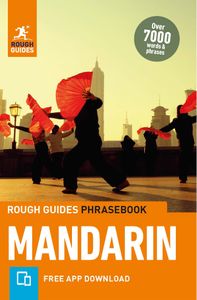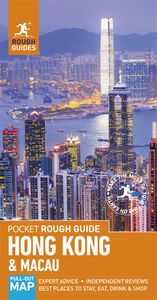Changsha
CHANGSHA, Hunan’s high-rise-filled capital, had been an important river town for millennia before its demarcation as a treaty port in 1903. Europeans had hoped to exploit the city’s trading position, upstream from Dongtine Lake astride the Xiang river, but found that the Hunanese had a very short fuse (something other Chinese already knew): after the British raised the market price of rice during a famine in 1910, the foreign quarter was totally destroyed by rioting. Guomindang forces torched much of the rest of the city in 1938 as they fled the Japanese advance, and recent modernizations have finished the job of demolishing the past. Today, away from the bustling shopping district and vibrant nightlife, sights linked to Chairman Mao account for the majority of Changsha’s formal attractions, though there are also some parks to wander around and a fascinating Provincial Museum.
Changsha and the Chairman
Primarily, Changsha is known for its links with Mao Zedong, who arrived here in 1911 at the age of eighteen as nationwide power struggles erupted following the collapse of the Manchu dynasty. By 1918 there was a real movement for Hunan to become an independent state and, for a time, this found favour with local warlord Zhao Hendi, though he soon turned violently on his own supporters. Mao, back in his hometown of Shaoshan heading a Communist Party branch, was singled out for persecution and in 1925 fled to Guangzhou, taking up a teaching post at the Peasant Movement Training Institute. Within three years he returned to Hunan, organizing the abortive Autumn Harvest Uprising and establishing guerrilla bases in rural Jiangxi.
Mao was by no means the only young Hunanese caught up in these events, and a number of his contemporaries surfaced in the Communist government, including Liu Shaoqi, Mao’s deputy until he became a victim of the Cultural Revolution; and Hua Guofeng, Mao’s lookalike and briefly empowered successor.
Qu Yuan and the Dragon Boat Festival
The former state of Chu, which encompassed northern Hunan, was under siege in 278 BC from the first stirrings of the ambitious Qin armies, who later brought all of China under their control. At the time, the lakeside town of Yueyang was the haunt of the exiled poet-governor Qu Yuan, a victim of palace politics but nonetheless a great patriot of Chu. Hearing of the imminent invasion, Qu picked up a heavy stone and drowned himself in the nearby Miluo River rather than see his beloved state conquered. Distraught locals raced to save him in their boats, but were too late. They returned later to scatter zongzi (packets of meat and sticky rice wrapped up in reeds and lotus leaves) into the river as an offering to Qu Yuan’s spirit.
The Dragon Boat Festival, held throughout China on the fifth day of the fifth lunar month (June or July), commemorates the rowers’ hopeless rush – though many historians trace the tradition of food offerings and annual boat races to long before Qu’s time. At any rate, it’s a festive rather than mournful occasion, with the consumption of huge quantities of steamed zongzi and keen competition between local dragon-boat teams, who can be seen practising in their narrow, powerful crafts months before the event to the steady boom of a pacing drum. It’s a lively spectator sport, with crowds cheering the rowers along, but you need to be up early to get the most from the ceremonies (for example, the dedication of the dragon-headed prows) as the race itself lasts only a few minutes.
Zhangjiajie
Hidden away in the northwestern extremities of Hunan, Zhangjiajie protects a mystical landscape of sandstone shelves and fragmented limestone towers splintering away from a high plateau, often misted in low clouds and scored by countless streams, with practically every horizontal surface hidden under a primeval, subtropical green mantle. Among the 550-odd tree species (twice Europe’s total) within its 370 square kilometres are rare dove trees, ginkgos and dawn redwoods – the last identified by their stringy bark and feathery leaves; now popular as an ornamental tree, until 1948 they were believed extinct. The region is also home to several million ethnic Tujia, said by some to be the last descendants of western China’s mysterious prehistoric Ba kingdom.
On the downside, Zhangjiajie is beginning to suffer from its popularity, with more accessible parts of the reserve often almost invisible under hordes of litter-hurling tour groups. Fortunately the reserve is big enough that even on the main circuit it’s easy to lose the crowds, and the majesty of the scenery comfortably overrides manmade intrusions. The reserve is best explored over two or three days, and you’ll need comfortable walking shoes and the right seasonal dress – it’s humid in summer, cold from late autumn, and the area is often covered in light snow early in the year.
Zhangjiajie day-trips
It’s worth spending several days in the region, but if your time is limited you can still get to grips with Zhangjiajie’s astounding natural beauty in as little as half a day: walk (or take the very short bus ride) to the cable car station (索道站, suŏdào zhàn; ¥118 return or ¥65 one-way) then ride up to Huangshi village (黄石寨, huángshí zhài), where the cable car terminates. From here hike the 2-hour circuit anticlockwise (most tour groups go the other way) around this minor, island-like plateau, surrounded by breathtaking views of the sea of pinnacles. Towards the end of the circuit, bearing left at the police post before Star Picking Tower will put you on the 45-minute trail back down to the park entrance.
For more of a hike, the left path from the park entrance follows a valley up to Huangshi, a trail which takes around two or three hours. Once at the top you can pick up the plateau circuit and walk or take the cable car back down. Alternatively, bearing right at the park entrance offers several more hiking loops, the shortest of which (around 4hr) runs along Golden Whip Stream, branching off to the right and returning to base through a particularly dense stand of crags below two facing outcrops known as the Yearning Couple (engraved tablets along the path identify many other formations). Alternatively, bearing left after a couple of kilometres – consult a map – takes you up past Bewitching Terrace (迷魂台, míhún tái) into the Shadao Valley. From here, basic trails continue through magnificent scenery around the western edge of the plateau to Black Dragon village (黑龙寨, hēilóng zhài), then circuit back to the park gates. This is a lengthy day’s walk, and you won’t see many other tourists along the way.






















